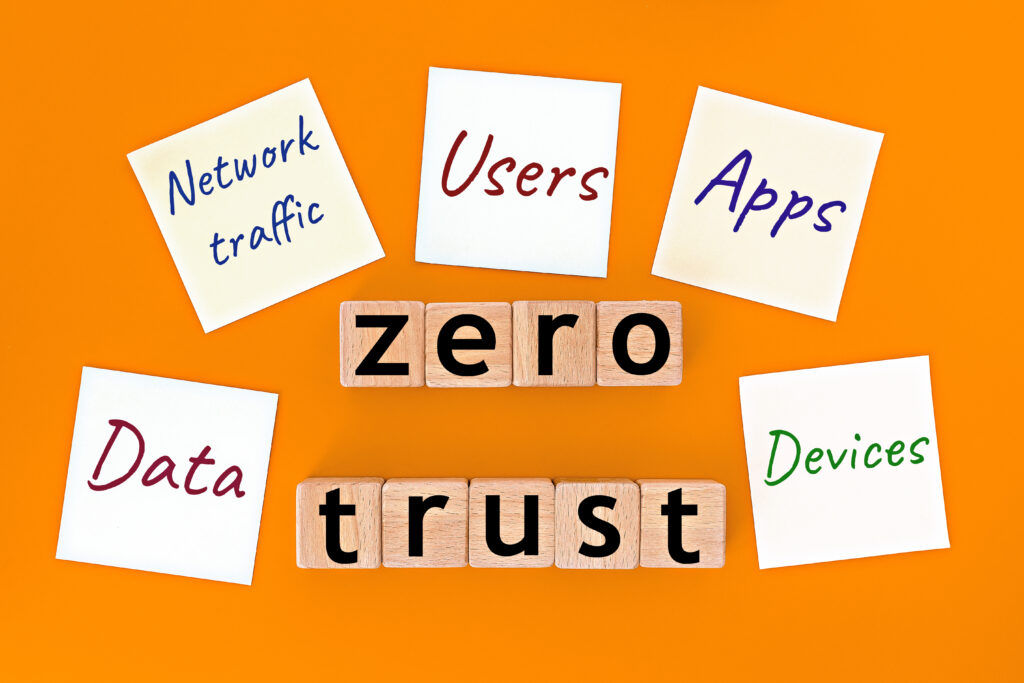With threats on the rise, organizations across the Asia Pacific are adopting zero-trust security models to bolster defenses. This approach verifies all users and devices, building security by assuming no access is implicitly trusted. Continuous authentication and granular privileges aim to limit damage from breaches. Read on to learn how Zero Trust is gaining momentum in APAC as a proactive strategy against escalating cybercrime. Discover leading examples of implementation and projections for the future adoption of this security paradigm shift.
The Rise of Zero Trust Security in APAC
Changing Threat Landscape
- With escalating cyber threats in recent years, APAC organizations can no longer rely on traditional perimeter-based security models. Adversaries are increasingly targeting corporate networks, and data breaches have become more frequent and impactful. According to industry reports, APAC experienced the highest data breach costs in 2020.
To mitigate risks from sophisticated threats, APAC businesses are now embracing zero-trust security models. This approach verifies all users and devices before granting access to applications and data. It reduces exposure by limiting access and containing breaches. Leading technology research firms predict rapid adoption of zero-trust frameworks across APAC in the coming years.
Drivers of Adoption
- Several factors are accelerating Zero Trust deployments in APAC. These include digital transformation initiatives, remote work trends, and compliance mandates. As APAC enterprises adopt cloud and mobility, their attack surfaces are expanding. Zero Trust helps secure new infrastructure and connections. Remote work also increases risks, as employees access resources from unsecured networks. Zero Trust controls access and protects data regardless of location.
Regulations like GDPR, PDPA, and NIS Directive are also driving adoption. Zero Trust frameworks help APAC organizations gain visibility and control over data to support compliance. Leading APAC technology companies and cybersecurity vendors now offer zero-trust solutions for the region. They provide capabilities such as micro-segmentation, conditional access, and endpoint security – tailored for APAC customers. With increasing availability and maturity, Zero Trust is set to become mainstream in APAC.
Core Principles of Zero Trust Explained
Zero Trust security models are based on the assumption that no user or device should be trusted by default. Instead, users and devices must be continuously verified to gain access.
Continuous verification
- Zero Trust requires ongoing verification of users, devices, and system components before granting access to applications and data. Authentication and authorization must happen each time a user or device requests access, not just at the initial login. This helps prevent breaches resulting from stolen credentials or compromised accounts.
Least privilege access
- Zero Trust only provides users and devices with the minimum level of access needed to perform their jobs. Access is determined based on user identity, device security profile, and other attributes. Strict access controls and micro-segmentation are used to limit lateral movement should a compromise occur.
Assume breach
- Zero Trust assumes that attackers will eventually breach perimeter defenses. With Zero Trust, organizations shift their focus from preventing intrusions to minimizing the impact of breaches. By employing techniques like micro-segmentation, least privilege access, and encryption, Zero Trust makes it difficult for attackers to access sensitive data and spread laterally within the network even after gaining initial access.
With the increase in remote work and cloud adoption, traditional perimeter-based security models are no longer sufficient. Zero Trust provides a secure, scalable framework for the modern enterprise. By verifying all connections, limiting access, and assuming compromise, Zero Trust reduces risk no matter where users and data reside. For organizations in APAC, adopting a Zero Trust approach is critical to gain visibility and control, and strengthen cyber resilience in today’s threat landscape.
Top Benefits of Adopting a Zero Trust Model
Enhanced Data Security
- A zero-trust model provides enhanced data security by eliminating implicit trust in any user, device, or network. It requires continuous verification of users and systems before granting access to applications and data. This minimizes the risk of data breaches caused by compromised user accounts or devices. With Zero Trust, no user or system has default access to data and applications.
Improved Visibility
- Zero Trust models provide centralized visibility across all users, devices, and networks. This allows organizations to monitor user activities, detect anomalies, and mitigate threats in real time. Continuous monitoring and granular access controls give IT teams a holistic view of security risks across the organization.
Reduced Risk of Lateral Movement
- Zero Trust prevents lateral movement within networks by segmenting access and enforcing granular controls. Even after gaining initial access, attackers cannot easily move to other parts of the network. Micro-segmentation and least-privileged access contained within Zero Trust models restrict unauthorized access across systems and applications.
Enhanced Productivity
- While Zero Trust enhances security, it does not compromise user experience and productivity. Conditional access and single sign-on provide users with simple and secure access to authorized data and applications. Seamless authentication and granular access keep users productive without excess friction.
Zero Trust models strengthen data security through a “never trust, always verify” approach. For organizations in APAC facing increasing cyber threats, Zero Trust can help reduce risks, gain visibility, limit lateral movement, and keep users productive. With the right solution and implementation, Zero Trust may offer the robust security today’s digital environments demand without compromising user experience. Overall, the benefits of adopting a zero-trust model are substantial for enterprises aiming to strengthen their security posture.
Implementing Zero Trust: Challenges and Best Practises

As organizations adopt zero-trust security models, several challenges may arise that security teams should prepare for. Zero Trust represents a significant shift from traditional security approaches, requiring updated policies, procedures, and technologies.
Legacy systems that predate modern security standards may require updates to support Zero Trust. Security teams should conduct audits to identify systems lacking capabilities like multi-factor authentication, data encryption, and micro-segmentation. Priority should be given to updating systems containing sensitive data or controlling critical infrastructure.
Changing culture and processes
- Zero Trust also necessitates a cultural shift within organizations. Employees accustomed to implicit trust models may resist new security procedures like routine authentication or device verification. Education and training are necessary to help personnel understand the importance of Zero Trust and its role in its success. Updated processes, like revamped access request policies, must also be developed and socialized.
Selecting and integrating new technologies
- Core Zero Trust technologies like software-defined perimeters, micro-segmentation, and analytics tools must be selected and integrated into the environment. This requires careful evaluation to choose solutions that meet the organization’s unique needs and align with existing infrastructure. Phased deployment plans can help minimize disruption as new technologies come online.
Continuous monitoring and adaptation
- Effective Zero Trust implementation is an iterative process that requires continuous monitoring and adaptation as threats evolve. Utilize analytics tools to gain visibility into user and device activity, thus allowing security teams to make data-driven decisions about policy and control changes. Regular audits of Zero Trust frameworks, technologies, and processes are necessary to identify new risks and make improvements.
With adequate preparation and commitment to ongoing refinement, organizations can overcome these challenges to build a robust zero-trust security model. Success requires bringing personnel, legacy systems, and processes along on the journey to a modern, verified-access approach to information security.
The Future of Zero Trust Security in APAC
As zero-trust security models become more widely adopted, organizations in Asia-Pacific can expect this approach to shape cybersecurity strategies over the coming years. Continuous verification and micro-segmentation will be emphasized. With Zero Trust, users, and devices are continuously authenticated and authorized based on policy. This helps limit access to only what is needed. Micro-segmentation takes this a step further by creating secure zones in the network and continuously monitoring and verifying connections between zones.
Cloud-based security will become more prominent.
- Zero Trust suites cloud environments and will often leverage cloud-based security tools. Cloud access security brokers can monitor and control access to cloud resources. Cloud workload protection platforms protect virtual machines and containers. Expect more security vendors to offer Zero Trust solutions via the cloud.
Artificial intelligence and automation will enhance Zero Trust.
- AI and machine learning techniques can help analyze huge amounts of data to detect threats and automate responses. They can spot anomalies, monitor user and device behavior to determine risk levels, and take action to block or quarantine systems when needed. Automation also reduces the burden on security teams and helps enforce policies consistently.
Collaboration across borders will increase.
- As cyber threats become more global, regional cooperation on security will grow in importance. Zero Trust can facilitate the secure exchange of information across organizations. With continuous verification, micro-segmentation, and a “deny by default” approach, Zero Trust allows controlled access and collaboration, even with external partners. This regional collaboration will strengthen cyber defenses across APAC.
In summary, Zero Trust security models significantly impact cyber strategies in Asia-Pacific over the coming years. Continuous verification, cloud-based security, AI, and regional cooperation will all shape the future of Zero Trust in the region and strengthen cyber defenses against mounting threats. By taking a “never trust, always verify” approach, organizations can help reduce risk and better protect critical data and systems.
Summing It Up
The adoption of Zero Trust security in the APAC region reflects a growing recognition of the need for proactive cyber defenses. As threats become more sophisticated, legacy security models struggle to keep up. Zero Trust’s verify-first approach provides the protection today’s organizations require. Implementing it does present challenges, but with careful planning and staged rollouts, APAC companies can harness its benefits. By assuming breaches and segmenting access, Zero Trust allows businesses to limit damage and prevent lateral movement. For APAC firms facing rising cyber risks, Zero Trust delivers a powerful way to regain control. With adaptation and commitment, its enhanced security can be achieved.
More Stories
Roblox Farming Craze Fuels Surging App Store Economy
As you dive into the dynamic world of digital economies, one phenomenon stands out: the Roblox farming craze. This surge,...
EastWest Bank Embraces Temenos SaaS to Propel Digital Transformation
EastWest Bank leads digital transformation in financial services through its new partnership with Temenos. The collaboration uses Temenos’ advanced Software-as-a-Service (SaaS) solution.
AI Synergy: Exabeam and Vectra AI Forge Unified Front Against Evolving Cyber Threats
The alliance between Exabeam and Vectra AI marks a major cybersecurity advancement. This strategic partnership merges top-tier technologies from both companies to enhance defenses against complex cyberattacks.
TikTok videos now push infostealer malware in ClickFix attacks
Cybercriminals have turned to this social media giant to propagate infostealer malware through a strategy known as ClickFix Attacks.
Apex Group Taps Tom Bennett to Spearhead Global Fintech Strategy
Apex Group Ltd. has strategically appointed Tom Bennett as Global Head of Fintech. This pivotal role highlights Apex Group’s commitment to advancing its digital capabilities across private markets, capital markets, and digital assets.
Proofpoint Acquires Hornetsecurity to Strengthen Microsoft 365 Security for SMBs
Proofpoint has announced the acquisition of Hornetsecurity to strengthen cybersecurity for small and medium-sized businesses (SMBs). Hornetsecurity is a leading European provider of AI-driven Microsoft 365 security solutions.


